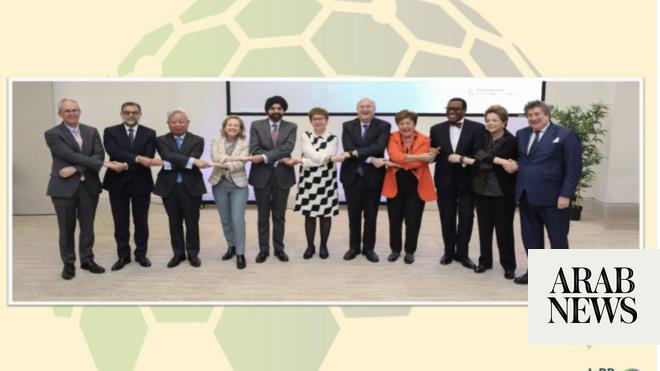
Jim Yong Kim abruptly resigned as the president of the World Bank in January. He stated that he could do more for development working in private equity or other arms of the private sector as the reason for leaving before his term expired. In the aftermath of Kim’s resignation, one question was widely asked: Are multilateral development banks (MDBs) still relevant?
The answer to this question must be a resounding yes, the world does need these institutions. While Kim has a point that the private sector is an important force behind development, it will never be the only one. The overall goal of private sector activities must be profit. Development takes more than profit; it takes long-term policy, capacity building and, in parts, very long planning horizons.
There is a whole raft of MDBs, including the World Bank and the regional development banks (the Inter-American Development Bank, the European Bank for Reconstruction and Development, the African Development Bank, the Asian Development Bank, and the Asian Infrastructure Investment Bank, which all have a regional focus in terms of where they invest). Most of them also have private sector arms whose investments serve as catalysts for the nascent private sector in their member states. There is also the Islamic Development Bank (IsDB), which held its 44th annual meeting in Morocco last week. All of these banks are values-based institutions, in as much as they want to end poverty in their recipient member countries. They all work toward achieving the UN’s 17 Sustainable Development Goals (SDGs). The IsDB is also faith-based and adheres to Islamic ethical principles and employs Islamic finance to fund its projects. It too has a private sector arm, which held a one-day seminar during the annual meeting. There is a whole raft of other development institutions in the UN and development arms of governments, such as the UK’s Department for International Development and the US Agency for International Development. They all have their own specific focuses.
There is an argument to be made that these institutions could coordinate better. They do co-finance larger projects, but at times they duplicate efforts, which is not money well spent. They also have large, unwieldy bureaucracies. The argument is to engage to reform these institutions rather than abolish them altogether. The latter would be tantamount to throwing the baby out with the bathwater.
The question the world has to ask itself is: How high on the priority list does it want to place the SDGs, jobs and stable societies?
Cornelia Meyer
The IsDB is unique, precisely because it is faith-based and is uses Islamic financial instruments. Its president, Dr. Bandar Al-Hajjar, explained the rationale for MDBs extremely well in his opening speech at the institution’s annual meeting. He also focused on the need to involve other sources of financing, especially the private sector, as it will cost $1 trillion a year to achieve the SDGs. Currently, MDBs disburse $145 billion a year, of which the IsDB share slightly exceeds 8 percent.
Achieving the SDGs is an uphill battle, especially given that the Least Developed Countries (LDCs) have rapidly growing populations. The population of IsDB member countries was 1.7 billion in 2017 and is expected to grow to 2.2 billion by 2030. This will amount to at least 500 million people entering the workforce over the next three decades — and this only in the 57 member countries of the IsDB. It is pivotal to create the jobs required to accommodate the youth bulge in order to break the cycle of poverty and conflict in LDCs. Unemployed young men roaming the streets does not make for stable societies.
Given the monumental tasks of achieving the SDGs and creating hundreds of millions of jobs, it becomes obvious that every dollar is needed. MDBs, governments, other developmentally-focused institutions and the private sector need to cooperate. Investments matter, as well as the ability to insure economic activities via political risk guarantees, trade insurance schemes, etc. These insurance activities can act as a multiplier of both public and private sector investments.
Technology matters too, because the Economy 4.0 — digital globalization, big data, artificial intelligence, etc. — will create the jobs of the future. MDBs and governments need to ensure that their countries are not left behind. Mechanisms like the IsDB’s $500 million Transform fund are helpful because they encourage innovation at the level of small and medium-sized enterprises (SMEs) and start -ups in the LDCs. Innovation will increasingly shape our societies. It is also a key driver behind creating the jobs of the future. Therefore, it is important that innovation is not just the purview of big companies in rich countries, but is pushed down to the level of economic activity that matters most in terms of job creation, namely SMEs in the developing world.
The development community, including the IsDB and others, put a strong focus on entrepreneurship. This brings to mind the age-old motto that it is better to teach a man to fish than give him just one fish.
The question the world has to ask itself is: How high on the priority list does it want to place the SDGs, jobs and stable societies? If the answer is, as it should be, that these goals have top priority, then the world needs the MDBs. The public and private sectors and the international community have to work together to make the world a liveable place for all. That is the only way to build stable societies throughout the globe. It is also the only way to put an end to so many conflicts, which have their root causes in inequality and a lack of access to resources, both physical and increasingly also intellectual in the form of the Economy 4.0.
• Cornelia Meyer is a business consultant, macro-economist and energy expert. Twitter: @MeyerResources
Disclaimer: Views expressed by writers in this section are their own and do not necessarily reflect Arab News" point-of-view












